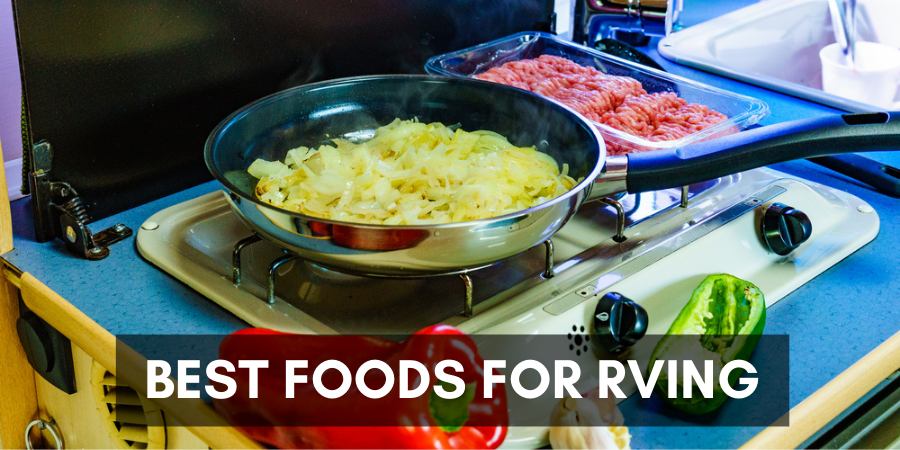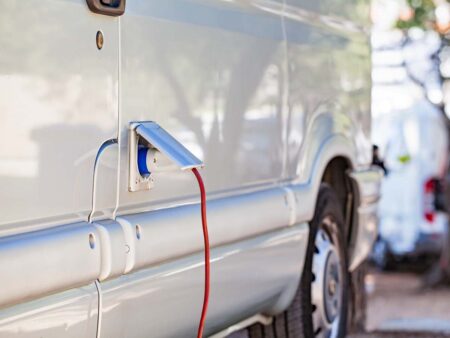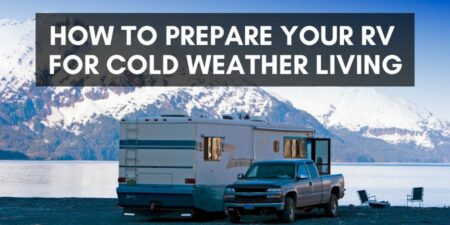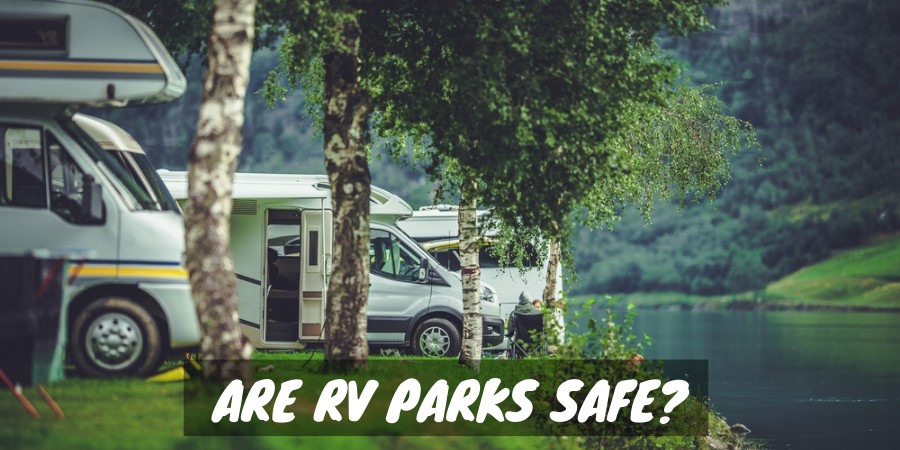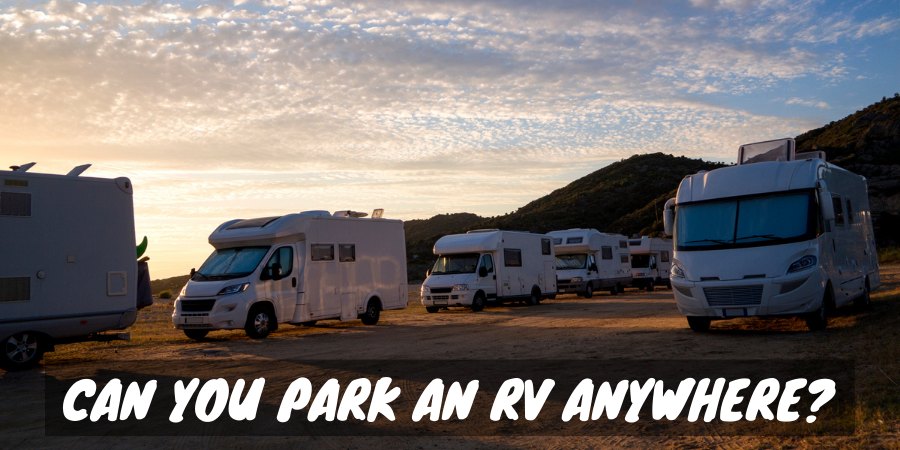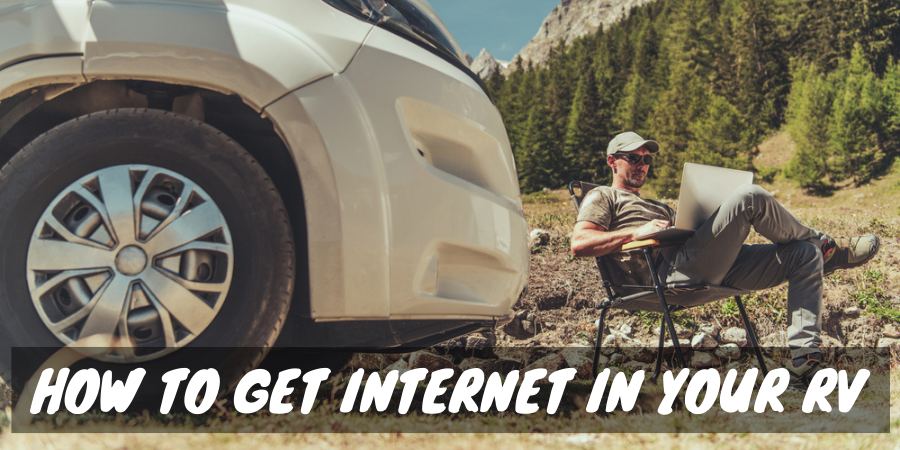What foods do you picture eating when camping? Hot dogs, burgers, steaks, beef jerky, s’mores?
While all those foods are great for grilling or roasting over a campfire for a couple of nights, most RVers prefer to keep to the regular dietary meals they enjoy at home.
To find a balance between traditional camping food vs. standard home-cooked meals, I dive into the best foods for RVing and how to cook them with ease.
RV fridges and kitchens have limits on space. However, getting clever with your food shopping, storage, and meals is the only way to keep everyone’s bellies full and happy on vacation, so stay here to find out how long-time RVers get it right!
What Appliances Are Best for RV Cooking
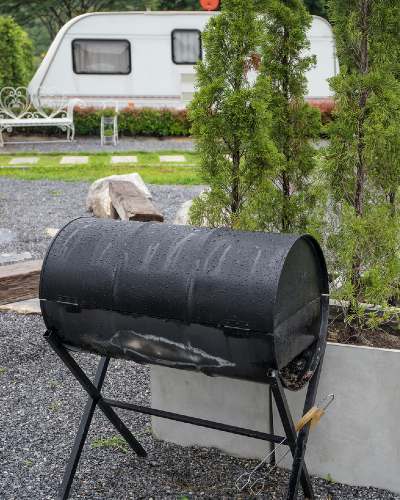
Before we get into the best foods for RV trips, you need to know what appliances are most often used for cooking while camping.
A little-known fact is that most people who have an oven in their recreational vehicle never use it, except for storage.
Camping season is typically in warmer months, and turning on the oven only increases temperatures inside the camper, especially when running the air conditioner.
Most people also like to forgo cooking on their stovetop burners to avoid heating their RV interior and instead use a grill, camp stove, or exterior RV kitchen burner.
From personal experience, and by polling RV friends, here are the top appliances RVer use to cook:
While my motorhome initially came with a stovetop and oven, I removed them during my remodel as I wanted the space for other, more practical purposes.
Since many RVs, like small travel trailers, teardrop campers, and pop-ups, don’t have a kitchen, I didn’t feel my plan would cause any issues with cooking, which has proven to be true.
For many years now of full-time RV travel, I’ve easily managed basic and more complex meals by only using an electric griddle, my propane grill, and a slow-cooker. I keep thinking of getting an air fryer but haven’t yet made the investment.
In all my years of travel, I’ve only met two people who regularly use their oven, and both love baking cakes and cookies.
Some RVs, especially fifth-wheels and larger motorhomes and travel trailers, come with convection microwaves. However, unlike a standard microwave, you can use the convection mode for baking foods like you can in an oven, making the actual oven almost a redundant appliance and another reason it’s rarely used.
Great RV Food Choices and Meals
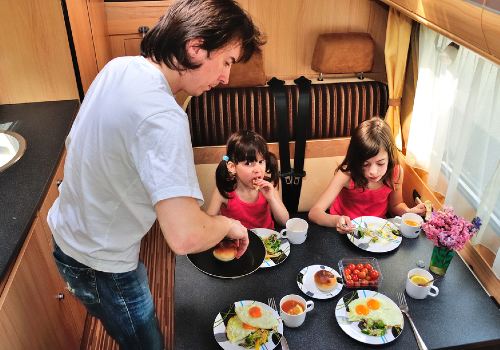
Great RVing foods are:
- Easy to cook/cook quickly
- Create little mess
- Staples you can store in a pantry
- Those you can freeze
The encouraging news is there are many ways to cook just about any type of food you love when you RV, from pasta to roasts.
You’ll need to learn how to adjust the way you prep and cook certain meals, but I can’t think of any food I cannot cook in my “kitchenless” RV.
Slow-cooker or air fry meals are fantastic for cooking an all-in-one meal with little fuss or mess.
All the ingredients go in, and you wait until it’s ready. You can then serve the food directly from the appliance to the plate.
I take frozen meat and place it directly into my slow-cooker with some spices, a bit of water, and canned, fresh, or frozen veggies. The meat cooks just fine without waiting for it to thaw out first.
For meal ideas, you can find great slow-cooker recipes that are tasty and the whole family will love. There are similar options for air fryer recipes for RVers if meal planning has you stumped.
And don’t worry if you have large meat items like a whole turkey or roast you want to make for a holiday or special meal. You can cook these on your grill if your oven isn’t large enough.
Just wrap the meat tightly in foil, add some butter, a bit of water, and let them cook for several hours on low heat until a meat thermometer hits the safe mark. You can then remove the foil, turn up the heat, and let the outside get a nice color and sear.
Microwaves are the easiest way to heat canned or boxed soups, vegetables, pasta, and sauces, or you can put them in a pan and pop it onto your interior or exterior RV stovetop or even directly onto your grill.
Of all the portable cooking appliances out there, I think the electric skillet is often overlooked. I cook so many meals in my skillet, and it only costs around $30. In addition, the non-stick surface cleans up quickly and easily.
Skillets are big enough to make several pancakes or eggs at once and great for frying up potatoes, grilling steaks, chicken, fish, and veggies. The deep sides are super for casserole-style meals, and you can lower the temperature and bake cornbread in it.
The lid keeps grease or splatters off your RV counters, and you can set it up outdoors if you wish.
Best Pantry Staples for RV Trips
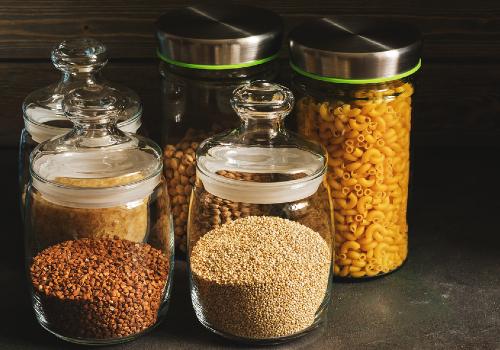
A well-stocked RV pantry allows you to make meals without the need for fresh or frozen foods, which is extremely helpful when boondocking or traveling in a camper with no refrigerator or freezer.
Here are the best pantry foods to keep on hand:
- Canned beans
- Canned vegetables and fruit
- Canned or packets of tuna and chicken
- Pasta sauce and noodles
- Pre-cooked rice packets
- Instant oatmeal
- Microwaveable popcorn
- Cereal
- Powdered or boxed milk or milk substitutes
- Boxed soups and broth
- Coffee and tea
- Crackers
- A variety of spices
Canned Goods
The long shelf-life makes canned goods a no-brainer for RVing, but they are also heavy, so if you stock up, disperse the weight evenly in cabinets on both sides of your camper.
So many foods come in cans, from fruits and veggies, fish and meats, pasta and noodles, and beans and soups. You can pop them open and into the microwave or pour contents into a pot and warm up on the stovetop or grill.
Packet Goods
I find I prefer food that comes in packets versus cans, as they are lighter, easier to store, and don’t have excessive liquid to discard.
Many you can open and eat directly from the pouch without warming the contents at all so that you can take them on hikes or boating excursions during your RV trips.
More and more food companies are offering packet packaging, which makes shopping for and storing food in your camper a breeze.
Another option is to go with packaged meals explicitly made for camping or backpacking. These packets are surprisingly good and typically come with a protein, carbohydrate, and vegetable combination for a complete dinner.
On the downside, most of the packets are made for one person and can be pricey. I like to keep a few around just in case of emergencies but don’t use them as a primary food source.
Powdered Food
Powdered versions of milk, coffee, and tea are common choices for instant camping drinks, but did you know many other foods come in powder form that is ideal for your RV pantry?
Consider adding some of the following powdered versions of food to increase your cooking options and bolster nutrition:
- Eggs
- Yogurt
- Cheese
- Butter
- Peanut butter
- Kale
- Honey
- Fruit and vegetable blends (nutritional supplement)
- Seeds like chia or flax
Powdered honey has changed my life. Now I can enjoy all the health and sweetening benefits without the sticky mess that attracts ants!
Auguson Farms has a wide array of powdered food items you should check out. Many of their products are available at large retailers like Walmart or directly from their company website.
Boxed Food and Drinks
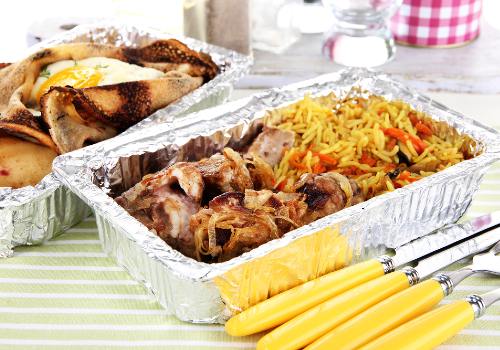
Similar to canned items, boxed foods are a great way to keep your pantry full of the staples you’ll want to cook and eat while RVing. The shape of the container is also much easier to stack and store.
You can find soups, sauces, and drinks (including water) in small boxes, which are easier to manage during road trips and reduce food spoilage and waste.
I am allergic to dairy but find my limited use of a milk alternative not worth buying in cold form from the supermarket, as the larger cartons tend to go bad before I use it up.
I instead purchase boxes of rice, soy, almond, or coconut milk in quart or six-packs of 12-ounce packages, which saves me money. Then, if I want to enjoy some on my morning cereal, I’ll put a box in the fridge or ice chest the night before to get it cold.
Other “normal” boxed foods, such as granola bars, or even Pop-Tarts, are great pantry staples as the individual inner packaging allows you to keep the remaining items fresh once you open the box.
Cereal is another excellent RV food, as you can use it for breakfast with milk, eat it dry as a snack, or add it as a crunchy topping for ice cream or yogurt. Always move cereal to an airtight container after opening to keep it fresh and deter pests.
Best Frozen Food Staples for RV Trips
If your motorhome or camping trailer has a freezer, it’s a wonderful way to keep items like meat, bread, fruit, and vegetables fresh until you’re ready to eat them. Please consider your ability to keep the food frozen during travel days before you stock your RV freezer.
Before I freeze any meat, I open the packaging and portion out enough to make a single meal for my partner and me into a ziplock freezer bag. Then, when it’s time to meal prep, it’s so easy to grab a bag from the stack to thaw out.
I also find that lunchmeat freezes and thaws well, both from the deli or prepackaged, so I never have to worry about portions going bad.
My RV freezer is small, so loaves of bread take up a lot of space. I now lean toward tortilla wraps to save space, but both freeze well.
Want to Connect With a Community of Over 1,078 RV Enthusiasts?
I also always pre-chop and package portions of veggies and fruits before putting them in my freezer to conserve space. I love to shop at local farmer’s markets, and freezing most of the product right away keeps it fresh for a long time.
Best Fresh Food Staples for RV Trips
The best fresh foods for your RV fridge are:
- Eggs
- Cheese
- Head lettuce
There’s something odd about the ability of standard RV refrigerators to maintain an even cool temperature. This problem can lead to many foods that last just fine inside your fridge at home, to spoil quickly in your camper’s fridge.
I’ve never had an issue with cheese or eggs staying edible in my old propane and electric RV fridge, but things like lunch meat, bagged lettuce, or greens went bad fast. Switching over to head lettuce gave me a few extra days to use it up on sandwiches, burgers, or salads.
I now have a residential-style electric-only fridge in my motorhome that keeps everything properly cold, and newer RVs are now coming with modern 12-volt refrigerators that do a better job keeping your food fresh.
Again, keep in mind your ability to keep your fridge running on travel days. If not, plan to shop for fresh food just before arrival at your destination if your campground offers shore power.
Do Campgrounds Have Stores to Buy Food?
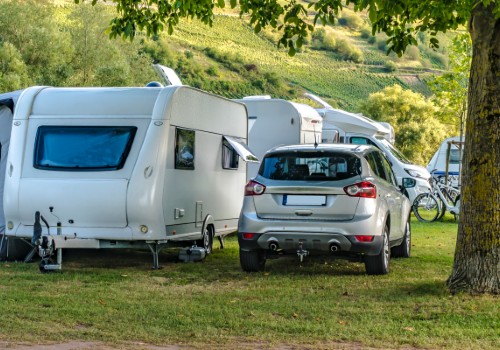
Most campgrounds do not have a store where you can buy food to create a regular meal.
I find that certain campgrounds, such as larger KOAs or RV parks in more remote locations, are more likely to offer a food section in their camp store as nearby grocery stores aren’t convenient for guests.
In general, any camp store that offers food will have a limited selection of items, with many falling into the snack category.
Never count on any campground store to provide you with food to buy, as things can change without staff notifying future guests.
This uncertainty is why you should always pack enough food to last for several days or your entire RV trip if your destination is far from a shopping center.
What Food Items You Should Expect to Find Inside a Campground Store
There are three types of campground “stores,” and websites or staff may be unclear about what that means.
Always ask if you’re looking to pick up food items at the RV park so you know what to expect.
Some campground stores are only an office with some brochures on local activities and attractions and maybe some souvenirs, with no food or drinks.
The majority of the campground or RV park stores offer drinks and snacks like candy and granola bars and chips and usually the ingredients for s’mores.
The last group of camp stores will offer a surprisingly good selection of food items, but most will be for breakfast or lunch, such as:
- Bread and buns
- Butter
- Eggs
- Processed cheese slices
- Sausages
- Lunchmeat
- Yogurt
- Hot dogs
- Bacon
Expect all the other standard drinks like milk, orange juice, sports and energy drinks, water, cold coffee and tea, soda, and even beer and wine.
You will also find standard condiments like ketchup, mustard, relish, mayonnaise, barbeque sauce, salt, pepper, and hot sauce.
Is Campground Store Food Expensive?

I find that most campground store food has pricing similar to what you see at a gas station or convenience store.
The markup isn’t huge over supermarket prices, with the most cost increase seen on the snack items like individual candy bars or small bags of chips versus the eggs or bread.
The benefit of campground food purchases is that it saves you time and fuel expense to drive to the nearest grocery store, making it worth the extra cost, especially when you only need extra hot dogs or you run out of mustard.
Final Thoughts
Campground cooking may seem like a hassle, but in reality, you can enjoy all the meals you love at home when you have the right RV appliances, pack the best pantry staples, and use alternative cooking techniques when necessary.
Forget about days on end of hot dogs and burgers when camping. Now you can create and eat gourmet or simple meals from your RV anytime you want! Delicious!
Camping Food and Camp Cooking for Beginners (Video)
"Man cannot discover new oceans unless he has the courage to lose sight of the shore."
-- Andre Gide

